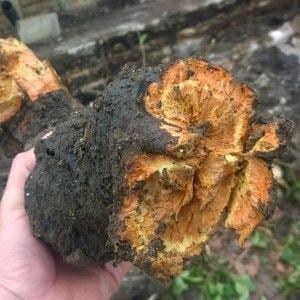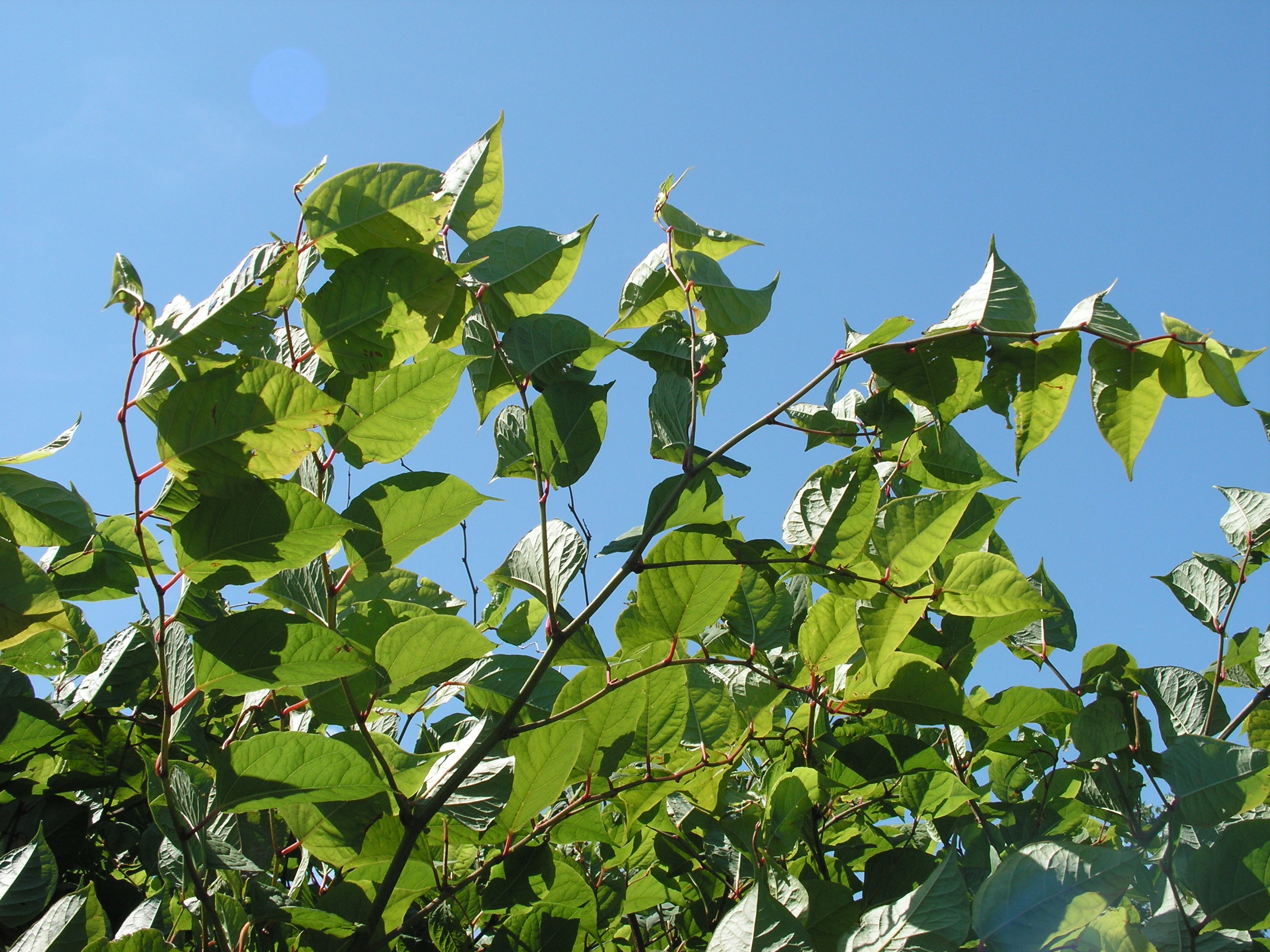Do not ignore Japanese knotweed – often referred to simply as knotweed
In this article we’ll cover some of the issues that knotweed creates for construction, property and facilities maintenance, utilities companies, landowners and commercial businesses. Of course knotweed also has an impact for homeowners but we cover that in these two articles: Buying a property with knotweed and Selling a property with knotweed.
So we’ll focus on the impact knotweed has on business here.

Construction
Right from pre-planning stage, developers should know whether land deemed for development has any potential issues, and knotweed is most definitely one of these. This doesn’t mean a plot of land with visible knotweed should not be considered for purchase, or cannot successfully be managed, but it’s when knotweed growth is not visible that it becomes a much bigger problem.
If you’re not sure what knotweed looks like, knotweed grows via underground rhizomes (roots) that are hardly detectable to the untrained eye. If however the rhizome has been split or damaged in any way, then it becomes clearly identifiable by its bright orange inner. Knotweed stems are green with a red speckled pattern, inside they have a green fleshy core (before they turn brittle and brown in winter) and are hollow.


It can therefore be very easy to miss knotweed during a site survey, and once construction starts, disturbance of the ground will cause fragments of rhizome to spread to other areas of the site, or worse, onto land outside the site. It only takes a piece 1-2cm wide to form a new plant, and we have known knotweed to have been taken home on construction worker’s clothing or equipment unknowingly – giving it a new, residential property to grow in!
Ignore knotweed at your peril!
Even if one small knotweed fragment is found onsite the entire project has to be shut down, signage put in place and the experts brought in. The consequences are not good – loss of productive activity, site workers put on leave until further notice, loss of contractors, and the project timeline disturbed. A developer’s nightmare! Having a pre-planning survey carried out will alleviate the problem slightly. This will determine whether above ground plants are knotweed or a harmless lookalike, or whether knotweed is lurking below ground, and remedial work can sometimes be factored into the purchase price and project management plan. There’s also the slight sweetener of LRR (Land Remediation Relief) which can be applied for in these circumstances, and we can help you with that.
Project on hold
As already mentioned, the site will need to be shut down with no vehicular access in or out, and onsite staff will need to follow bio-security guidelines in case any fragments have been accidentally picked up on muddy boots or equipment. The next step really depends on the site’s intended usage. If it’s a small site with all areas planned for development the best option to consider is complete eradication as this will ensure no fragments of knotweed are left which could then grow and spread. However, on larger sites with areas marked for green or open spaces, there are other options that means the knotweed can be excavated and safely left on site, such as in a burial cell. It’s best to consider all available options at this point.

Property and facilities maintenance
Finding a knotweed infestation on property maintained by management agents is a headache best avoided. If left to grow knotweed stands will impede amenity use areas and kill off plants and shrubs that had been planted to enhance the living environment of residents and visitors. The grounds maintenance aspect of any property management contract will include expectations on standards to be met that will be governed by a set management fee. As knotweed is hard to identify, it can therefore often become an unplanned burden on the management fee budget. Finding the problem too late, miss-identifying knotweed (by a property surveyor not trained in invasive weeds), or simply ignoring it is not advised – it’s just putting off what needs to be actioned.
Inheriting knotweed
To avoid issues a yearly survey could form part of the property managers site ‘health check’. Getting the eyes of a qualified knotweed surveyor onsite once a year – and more importantly – at the right time in the knotweed season could reduce the scale of the problem, and save on costs. This is equally important when taking on a new site, as the outgoing agent may not know knotweed is onsite either. Getting a knotweed survey done prior to signing the contract could either be an alert or a relief.

Utilities
Whether it’s laying cables underground or installing pipes as part of a new build, utilities companies can find the dreaded knotweed deep beneath the surface, only made visible once digging has begun. And by that time, it’s too late, the rhizomes will have been disturbed, broken up or unknowingly moved to another part of the site. Worse case – the entire site needs to be excavated.
Bigger problem than imagined
But just how do you know if knotweed is lurking? Doing trial digs is a great option after a survey has identified signs that knotweed may be present. To an expert even a broken cane from last year’s growth is a visible sign. A trial dig is where vertical holes are dug into the ground deep enough to see any rhizome. A knotweed expert will know where to carry out these trials, and will do so with minimum disturbance to the site, and ‘no-knotweed’ digs can be easily filled in again. For areas where knotweed is identified on sites planned for utilities installation, we get the vacuum out! Vacuum extraction is a much safer method to extract knotweed around high hazard infrastructure such as pipes, wiring or cables, and areas with endangered species of plant, tree or wildlife need to be protected.

Land owners
Farmers, managers of private estates and environmental trusts all manage land that could have knotweed growing out of control. Often the scale of the land is simply too large to notice young shoots growing among other plants, which means it becomes a problem when the infestation takes hold and encroaches onto areas of access for vehicles, workers or visitors. By this time the land usage could even be affected as the environmental impact of knotweed is high, or in the case of private estates that are open to the public – can lead to loss of business.
Potential loss of business
The good news is that knotweed on large land areas does not always need to be completely eradicated, it can be contained by installing knotweed barriers, or chemically treated over a period of 2-5 years which will control growth. If however full excavation is the chosen option, open land makes this easier and quicker to manage as long as there is good access and minimum site restrictions such as working projects on the estate , farming activities that cannot be rescheduled, or public visiting hours. Though we know from working on a vast range of sites, with different uses that there’s always a way round any obstacle.

Commercial businesses
We’ve worked with a lot of businesses over the years, from DIY chains to pubs and superstores, and we see a lot of commercial business premises that have knotweed lurking somewhere – usually around the corner. Often knotweed is encroaching from neighbouring land that is not in use, or derelict. Knotweed on this type of property is the kind of plant that only becomes a visible problem when it has exploited any weak areas in the infrastructure of the property or surrounding amenities such as pathways or car parks. When this happens the knotweed rhizomes will have traveled laterally underground, seeking any crack or hole in the ground’s surface to enable it to grow into plants above ground.
Disturbance of business
Whether the knotweed originated on the premises or came from outside the property boundary it needs to be controlled. Knotweed encroaching onto other properties can lead to legal issues for the business or land owner that can be very costly. If left to grow it will eventually impede access, create dense canopies that block out light to buildings and render footpaths, driveways and car parks impassable. All of which will impact business. Knotweed found on commercial premises can often be controlled with a herbicide treatment programme, which can be carried out with minimum disruption to staff, visitors or shoppers.
To sum up…
- Knotweed found on construction sites will put the project on immediate hold until the infestation is being controlled or has been removed.
- Knotweed on existing sites can impair effective grounds and facilities maintenance and prevent free amenity use
- Knotweed found on commercial properties or land can lead to encroachment issues that have legal consequences.
- To ignore knotweed will cause more harm than good.
If you’d like to speak to one of the team about any of the above please use the contact form below and we’ll get back to you, or call us on 0333 2414 413


